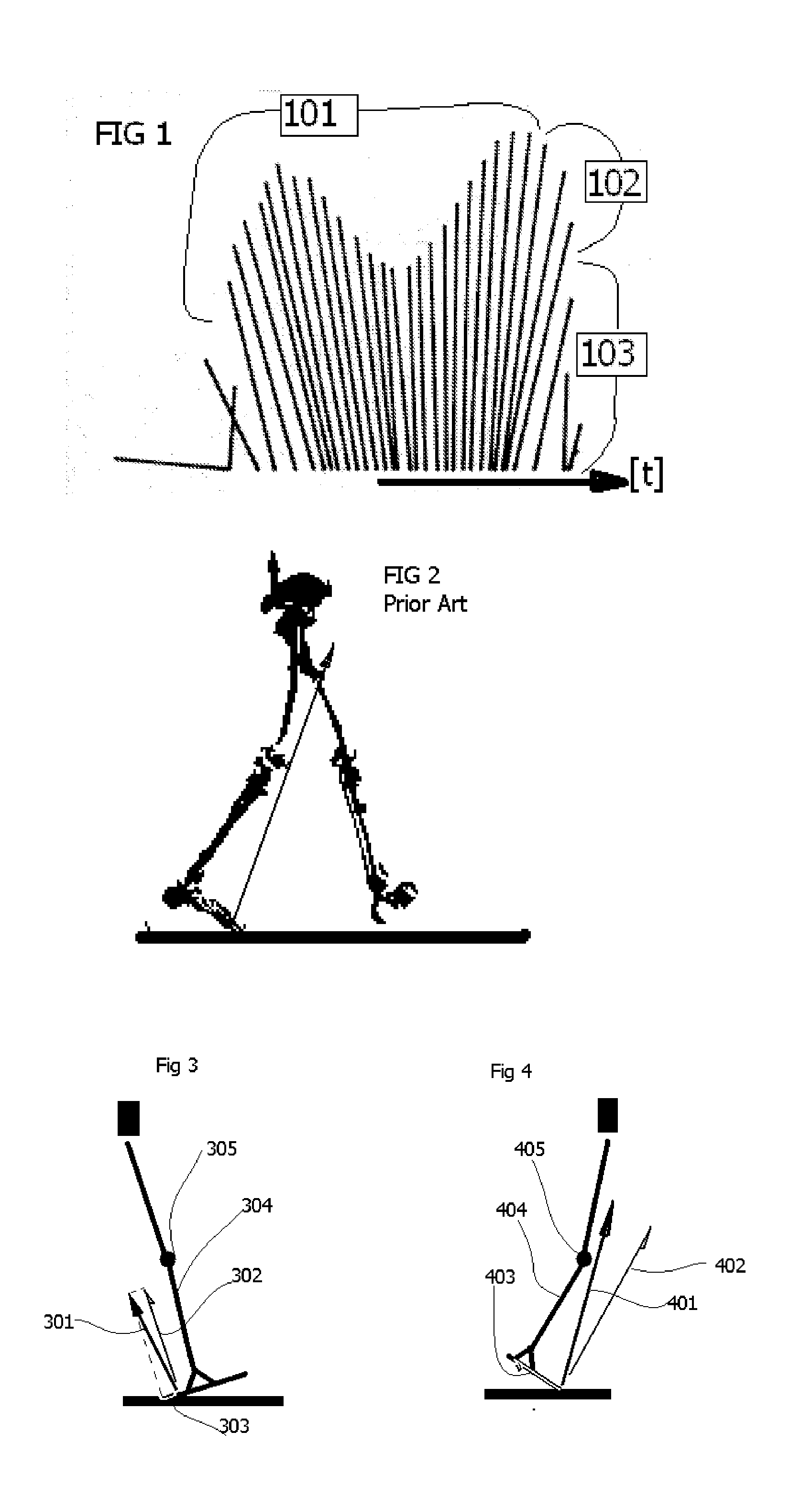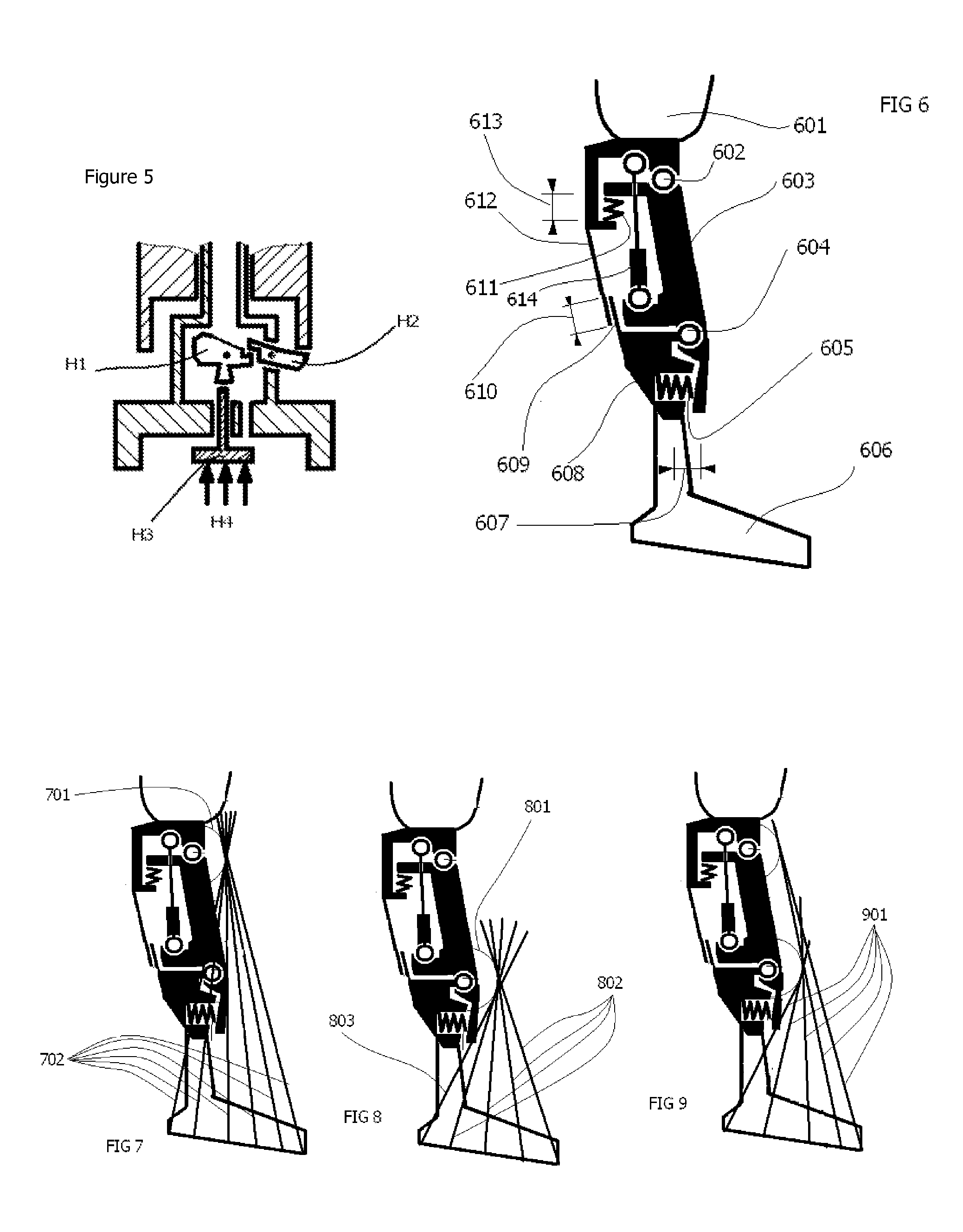Prosthesis having movement lock
a technology of movement lock and prosthesis, applied in the field of prosthesis, can solve the problems of providing a nasty surprise, serious issue, and affecting the use of prosthesis, and achieve the effect of simple use and simple cleaning
- Summary
- Abstract
- Description
- Claims
- Application Information
AI Technical Summary
Benefits of technology
Problems solved by technology
Method used
Image
Examples
first embodiment
[0056]the invention is shown as in FIG. 6. In this figure, there is a stump attachment 601, a principal knee axis 602, a chassis 603, an auxiliary axis 604, a foot portion 606, a first resilient member 611, a second resilient member 605, a member 608 fixed to the foot portion pivotally linked to chassis 603. Thus movement by extension is resisted by resilient member 605, and the resilient member 605 allows a range of movement 607 that is input to the corresponding total displacement 610. Further input into total displacement 610 arises from the deflection of resilient member 611 when the chassis pivotally extends about pivot 602 relative to 601. By the use of suitable materials, it will be apparent to the man skilled in the art that a degree of inherent resilience of the chassis may provide a sufficient degree of resilience whereby the specific use of first and second resilient members is not necessary.
[0057]The device is manufactured such that when there is only one input signal—of...
second embodiment
[0068]The second embodiment as shown in FIG. 10, comprises a hydraulic solution wherein a valve 1001 / 1002 is disposed in controller 614 which valve, in an open state, permits a low resistance state of the controller. The reference numerals of his Figure correspond with those of FIGS. 6-9. Two valve bodies are constructed such that the valve is closed when these bodies meet and the valve is open if the valve bodies are parted. The valve is constructed such that with a minimum input 613 the top valve body is raised, and with a minimum of input 607 the lower valve body is drawn down. Due to the fact that valve body 1001 can be raised up by member 612 against resistance of resilient member 611, and valve body 1002 can be pulled down by member 606 / 608 a gap 610 can form.
[0069]Accordingly, signal 613 is produced in such a way that member 612 can produce the signal by over extending the knee joint, but cannot remove be removed solely upon flexion of the knee joint. Head 1006 can therefore ...
PUM
 Login to View More
Login to View More Abstract
Description
Claims
Application Information
 Login to View More
Login to View More - R&D
- Intellectual Property
- Life Sciences
- Materials
- Tech Scout
- Unparalleled Data Quality
- Higher Quality Content
- 60% Fewer Hallucinations
Browse by: Latest US Patents, China's latest patents, Technical Efficacy Thesaurus, Application Domain, Technology Topic, Popular Technical Reports.
© 2025 PatSnap. All rights reserved.Legal|Privacy policy|Modern Slavery Act Transparency Statement|Sitemap|About US| Contact US: help@patsnap.com



